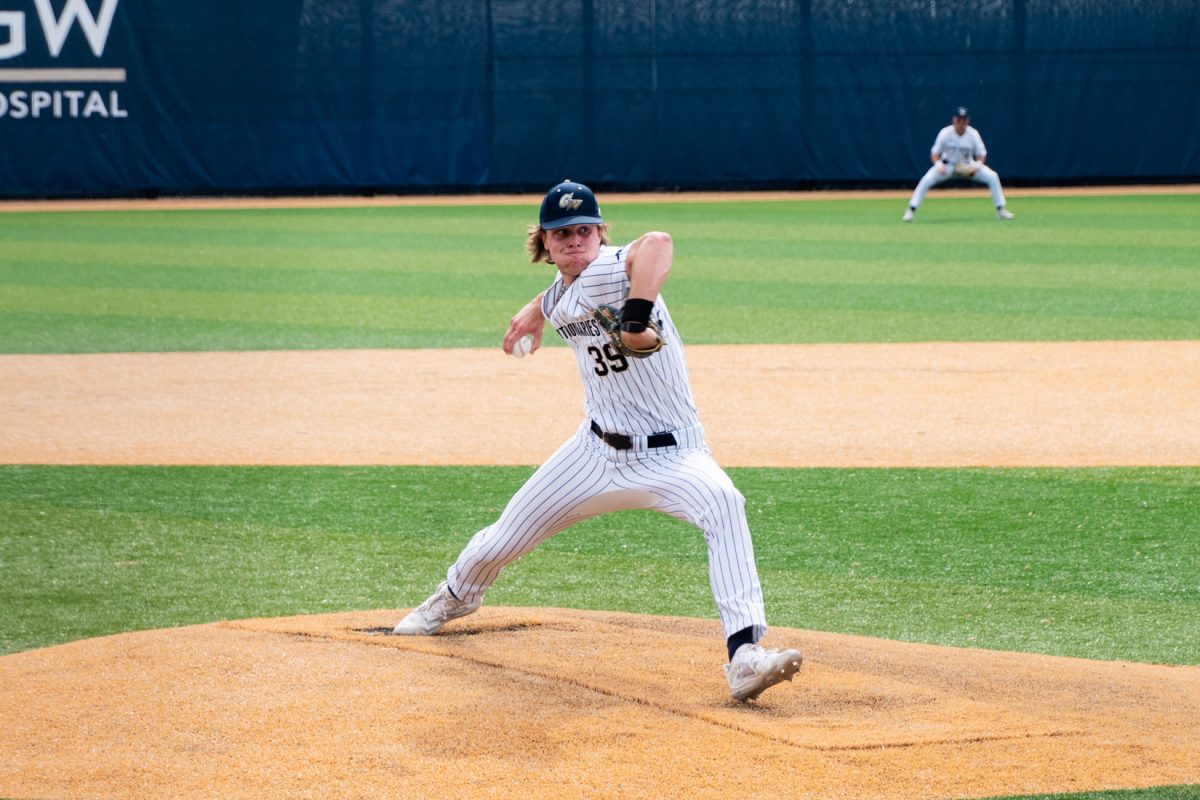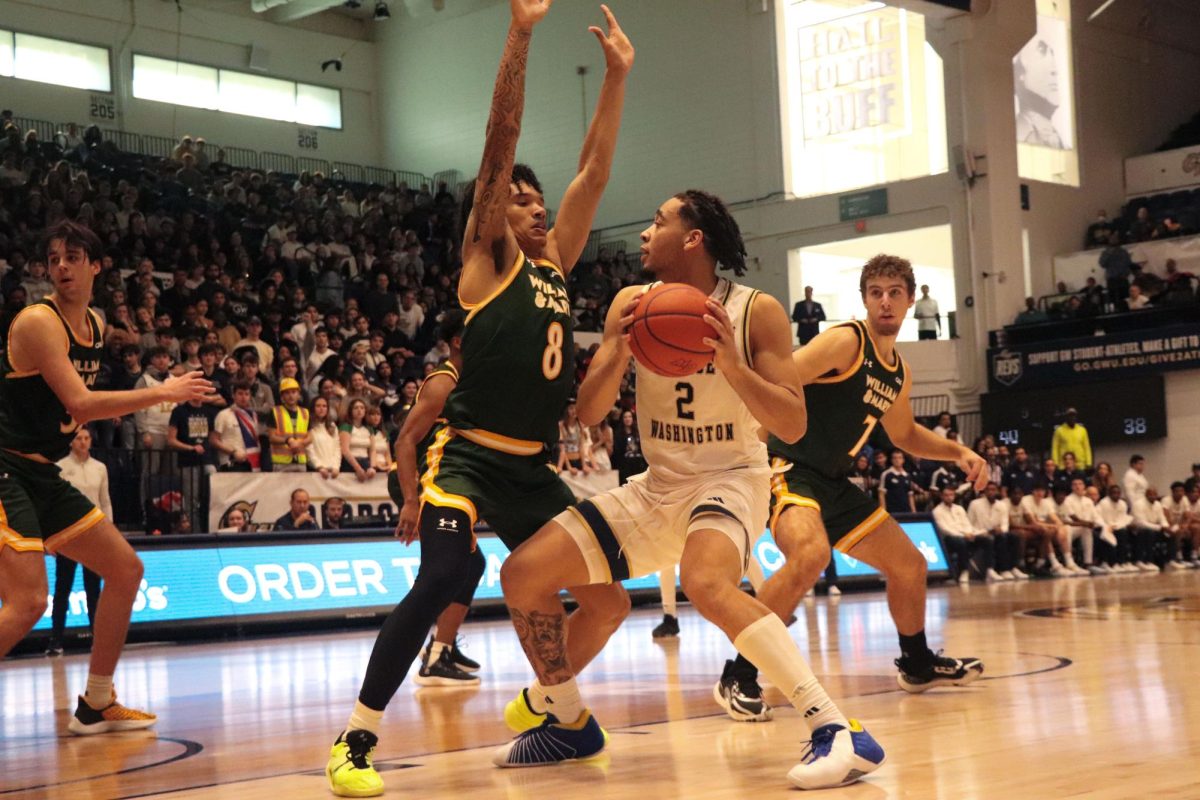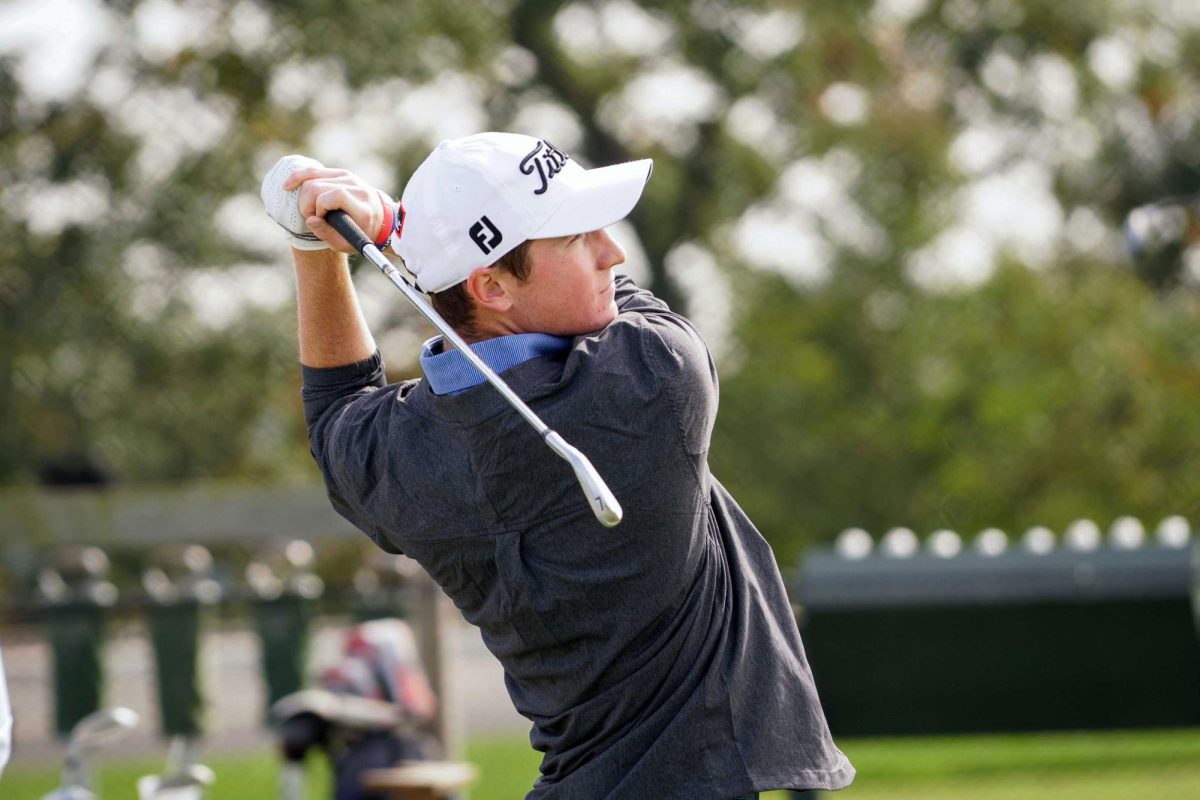When the men’s basketball team battled with Kansas State last December in a game broadcast on CBS, University officials saw first-hand the upside of building an athletics program that could someday soon capture national attention.
The national telecast zoomed in from commercial past the Washington Monument and Lincoln Memorial, settling on a Smith Center student section that was jumping and gyrating throughout GW’s near-upset win — the kind of priceless marketing the University is gunning for, athletic director Patrick Nero said.
“That’s exactly what [GW administrators] want. It’s taking all of their vision of what GW should present itself as,” Nero said. “We still have a long way to go, but building universities around athletics is what makes a lot of universities stronger and is something a lot of people can participate in.”
It’s been rare lately for GW to land a game on national TV. It’s even rarer to see a packed, sold-out Smith Center, as the men’s basketball team was near the bottom of the Atlantic 10 in attendance with its 2,554-person average, barely getting more attention than some of the the conference’s worst teams like Fordham.
But as the athletics department enters its second year of a marketing, fundraising and administrative plan designed to build winning programs, draw fans back and recruit top student-athletes, Nero said GW’s hallmark sports program is a key piece in helping the University reach its ambitions.
Clear evidence: A splashy new court design. GW unveiled in May a new Smith Center hardwood design with a rendering of the Capitol, Washington Monument and White House washed into the floor.

The design has garnered national attention, even from ESPN, as Nero said he hopes the court-turned-branding tool can help draw students and alumni back to GW basketball games in the fall with a marketing scheme designed to connect the University with D.C.
“One of the things you hear on the positive side of GW is its location. But one of the things you hear on the negative side is that we don’t have enough of a community because we’re in the middle of the city,” Nero said. “We want to be the place where people come together to celebrate GW as a university.”
An emphasis on University values has shown in the student-athletes’ attitudes, Nero said, and increased the energy within and around the athletics department as sports besides men’s basketball, like baseball, softball and tennis, showed off strong runs to the postseason this year.
As of now, GW is the only athletic program in the country that requires community service of its athletes, fulfilling an important University tenant. Last year, the student-athletes completed around 8,000 hours of service, exceeding the program’s goal of 5,000 hours.

The athletic department has started to pump money into marketing the program, though officials won’t say how much. GW has committed to investing in the athletic department after a committee of administrators and trustees found that the University had the second-lowest sports funding of any A-10 school.
Now, in the third year of Nero’s tenure atop the department, the program is getting heavy alumni attention, said Michelle Rubin, co-chair of the athletic department’s advisory council of alumni and donors, which formed last year.
“GW has been notorious, in the past, for not engaging alumni,” Rubin said. “What we want to do is we want people to come back and see what the new athletics department is doing, and see our new system, and we want them to see that there’s been a huge change in the last two years.”
The department will surpass its $1 million fundraising goal this year, Nero said, helping to find the alumni that the University is pining for to build a donor base. Part of the plan, he added, is to schedule men’s basketball games in cities heavily populated by alumni, like the Colonials’ non-conference trip to Orange County, Calif. for the Wooden Legacy tournament.
Rubin, a big donor to GW women’s sports, pointed to successful sports teams as “great marketing” for the University, adding that a newly designed court is a big piece of that.
Before, though, most top administrators ignored the programs, she added, and even the Colonials’ successful mid-decade run in the 2000s was a “one-off success.”
“There was no enthusiasm. There was no sense that athletics can make an impact at this university,” she said. “The attitude toward athletics was ‘Whatever, there’s a basketball game.’ Now, it’s a whole change of culture and we still have work to do.”
Alumnus Bob Poogach, who graduated in 1973 and remains a rabid Colonials fan, said he’s noticed a conscious shift from the athletics department to reach out to fans more.
“What does come across is that GW sports are making a real effort to excel and reach out rather than sitting back with the status quo,” he said. “Can’t help but notice and appreciate the momentum of the various programs.”








